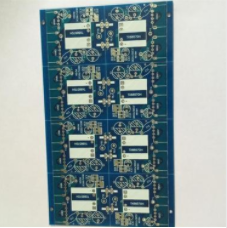Automotive electronics drive the rapid growth of automotive PCBs.
Automobiles have evolved from a complete mechanical device in the past to a combination of machinery and electronics. The proportion of automotive electronics in automotive manufacturing costs is constantly increasing, and the scale of the automotive electronics market is also expanding.
Mechatronics in the automotive industry
Due to the complex working environment of automobiles, automotive PCBs have extremely high requirements for reliability. Secondly, the automotive industry has a recall system. Manufacturers need to bear the risk of product errors. Small manufacturers cannot afford it, so they will be excluded.

However, vehicle PCB entry barriers are high and must go through a series of verification tests, and the certification cycle is long. Once certified, manufacturers generally will not easily change suppliers, and orders are relatively stable. Automotive electronics can be divided into two categories: body electronic control systems and vehicle electronic control systems.
The body control system can be divided into engine control system, body control system and chassis control system. The body control system combines the automobile mechanical system with electronic equipment, gives full play to the advantages of electronic products, improves the mechanical performance system, electromechanical combination, and ensures the driving of the car More secure and stable.
The on-board electronic control system mainly includes multimedia systems, navigation systems, driving recorders, reversing radar and other systems, which increase the convenience and entertainment of the car, and enhance the car experience.
Intelligent driving has opened up more imagination space for the automobile economy, and the penetration rate of the automobile market is increasing.
The ADAS system (advanced driver assistance system) market is growing rapidly, from the initial high-end market to the mid-range market, and improved new sensor technology is creating new opportunities for the system.
At present, the ADAS penetration rate is less than 5%. With the further expansion of functions, as well as policy incentives and even mandatory requirements, it is expected to grow at a rate of more than 20% in the future. By 2020, the market size is expected to be close to 30 billion U.S. dollars.
ADAS needs PCB to realize various operation control, safety control and peripheral control functions. It is expected that in the future, fully autonomous vehicles will be equipped with more PCBs to meet driving needs.
The scale and forecast of China’s intelligent driving market ADAS (Advanced Driver Assistance System: Advanced Driver Assistance System) is a transition to fully automated vehicles. Various sensors installed on the vehicle first collect environmental data inside and outside the vehicle to identify static and The location, detection and tracking of dynamic objects enable the driver to detect possible dangers in the fastest time to attract attention and improve the safety of active safety technology. The principle of ADAS technology is similar to that of human response mechanisms. The layer obtains surrounding information, which is linked to information processing from decision-making,
Finally, the calculation results are passed to the actuator to complete the driving operation. Millimeter wave radar is the core sensor of the ADAS system. Millimeter wave radar refers to a radar that works in the millimeter wave band. It uses the radar to transmit radio to the surrounding area, and calculates the distance, direction and size of obstacles by measuring and analyzing the reflected waves. Millimeter wave radar can be divided into 24GHz radar and 77GHz radar.
The 77GHz millimeter-wave radar can measure the speed of the vehicle ahead and the distance between two vehicles, while monitoring the speed and distance of its own vehicle. The 24GHz is mainly used to monitor objects near the vehicle. The volume of millimeter-wave radar will bring huge demand to automotive high-frequency PCBs. At present, automotive millimeter-wave radars are developing rapidly. During the release of automotive millimeter-wave radars in the next two years, cars that generally support ADAS functions will use at least 4 millimeter-wave radars. The new Audi A4 uses 5 millimeter-wave radars. Mercedes-Benz- The Mercedes-Benz S-Class uses 7 millimeter wave radar,
It is expected that the average number of millimeter wave radars used by bicycles will continue to grow in the future, and the demand for PCBS for automotive radars will grow rapidly. Millimeter wave radar products are about to enter the release period, and high-frequency PCB boards are needed to realize the function of the antenna-maintaining sufficient antenna signal strength in a small integration space.